Brazil’s Matero Masters pass in front of the Statue of Liberty before eventually claiming their division title at the 2015 Hawaiian Airlines Liberty Challenge. Photo credit: Kurt Nelson
One might find it odd to find the distinctly Hawaiian sport of outrigger canoe paddling on display in New York Harbor nearly 5,000 miles away from the 50th State.
However, the Hawaiian Airlines Liberty Challenge showcases canoe paddling as the worldwide sport that it has become as an impressive collection of athletes from around the globe converge on the Big Apple to compete and exchange cultural nuances.
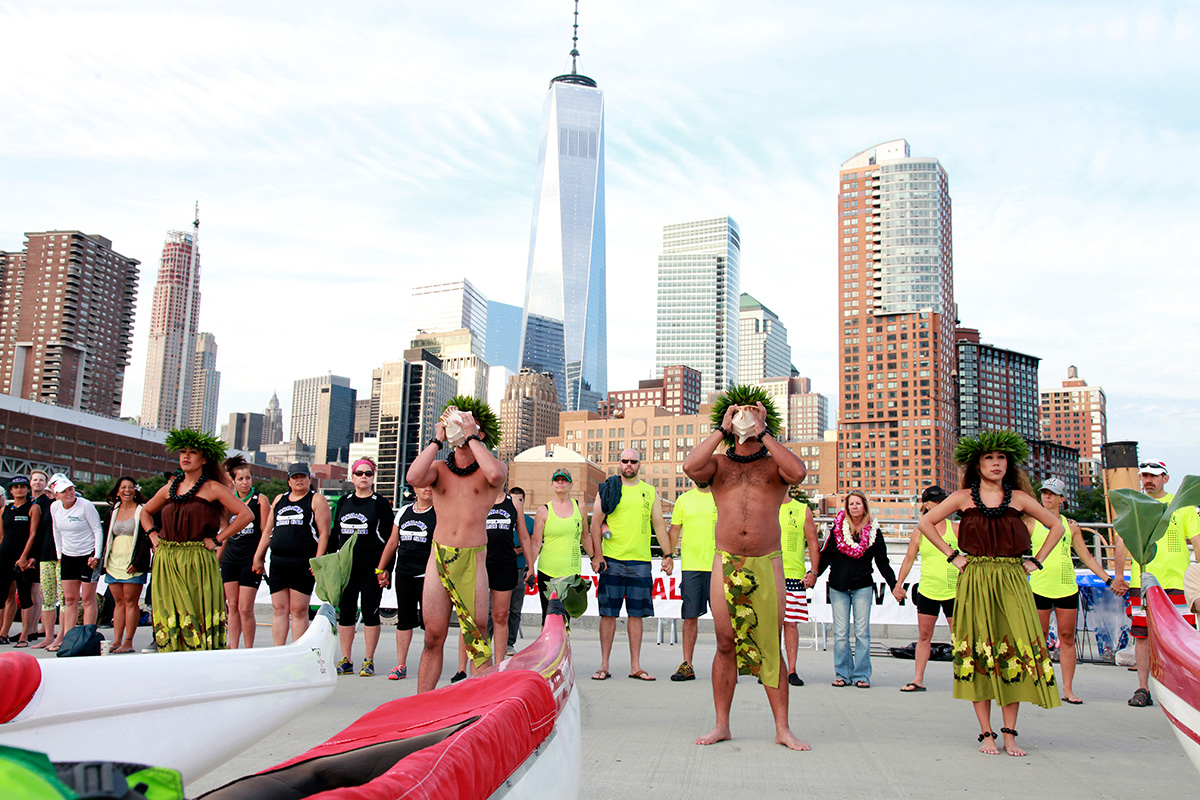
Top paddlers from around the world converge on New York City to celebrate their sport and Hawaiian culture. Photo credit: Jennifer Olsen
The Hawaiian Airlines Liberty Challenge will celebrate its 20th running as one of the most prestigious competitions in international outrigger canoe racing, a traditional activity in Polynesian culture. The race itself attracts more than 500 world-class athletes to New York Harbor each year to compete on a 15-mile course that takes paddlers along a scenic-yet-challenging route. Outrigger canoe paddling continues to gain popularity all over the World as demonstrated by this year’s Liberty Challenge field that will include crews from France, Panama, Brazil, and Dubai as well as top teams from Hawaii, Australia and New Zealand.
“This event is a bridge between the Pacific and Atlantic outrigger communities,” said event director Justin Gurney. “We are excited to host such a diverse group of international athletes this June.”
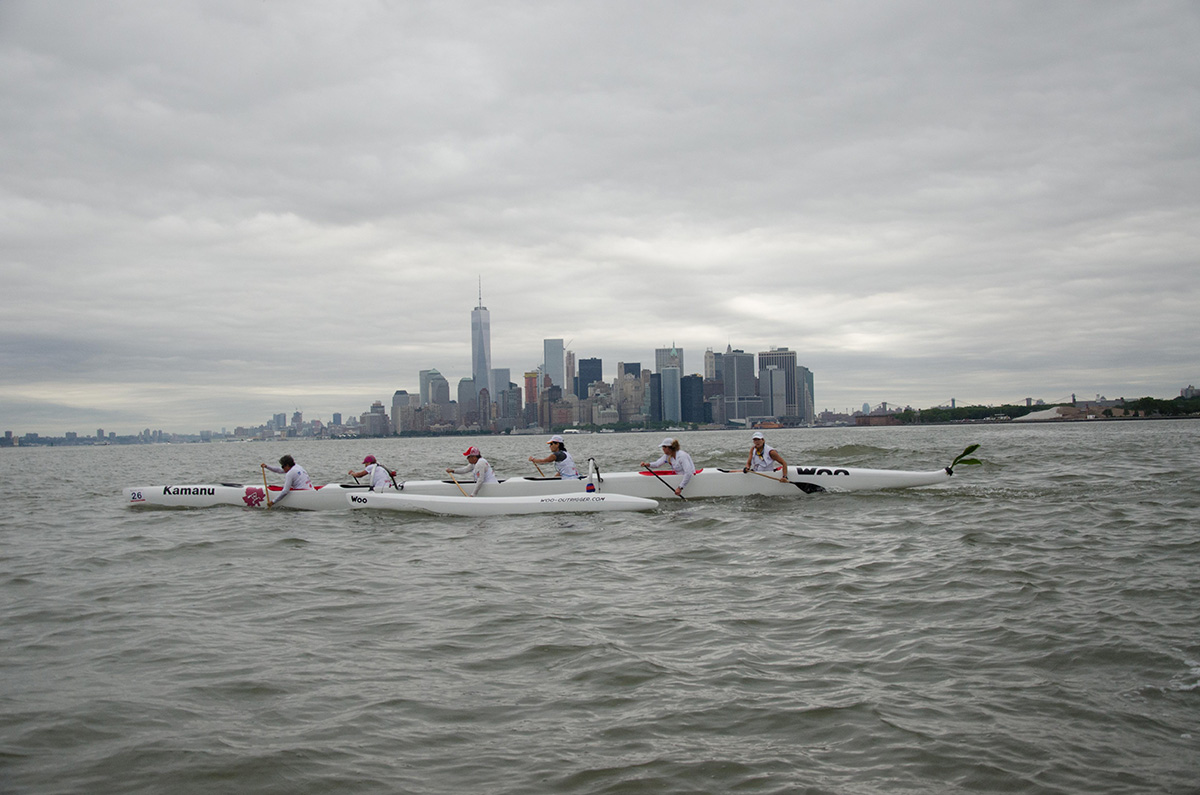
A Hawaii paddling crew takes to the waters of New York Harbor. Photo credit: Mark Scantlebury
This year’s Hawaiian Airlines Liberty Challenge will feature an additional historical wrinkle that links new-age paddlers and their cutting edge technology with native Hawaiian practices that can be traced back thousands of years. Attendees at what is regarded as the East Coast’s largest Pacific Islands festival and outrigger canoe race will be treated to live entertainment, family activities, and an opportunity to tour the Polynesian Voyaging Society’s Hōkūle‘a at the Hawaiian Airlines Liberty Challenge from 10 a.m. to 5 p.m. on June 11 at Hudson River Park’s Pier 26. The free festival hosted by New York Outrigger is expected to draw upwards of 10,000 New Yorkers and visitors as the public will have the opportunity to see the Hōkūle‘a – a traditional Polynesian sailing canoe – up close and learn about the crew’s historic worldwide voyage.
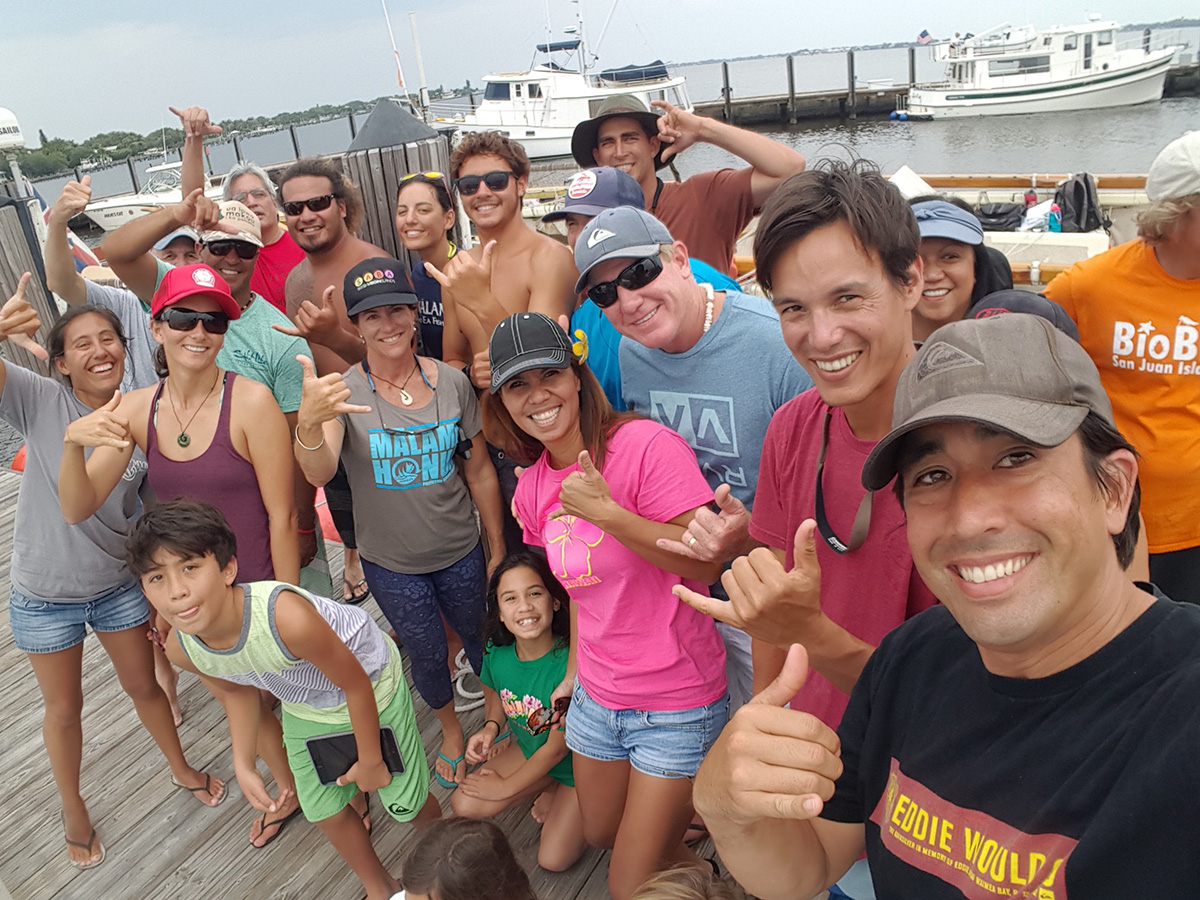
Multiple members of the 'ohana (family) that adopted Hokulea's crew in Stuart, Fla., as part of the Worldwide Voyage's 19th leg in April, 2016. Photo credit: Chris Blake
“We look forward to having Hōkūle‘a participate in the Hawaiian Airlines Liberty Challenge,” said Nainoa Thompson, a renowned master navigator and president of the Polynesian Voyaging Society. “As this event celebrates the Polynesian tradition of outrigger canoe paddling, we hope to share how Hōkūle‘a represents the common desire shared by people of Hawai‘i and around the world to protect our most cherished values and places from disappearing.”
In addition to the international paddlers on hand, crewmembers from the Hōkūle‘a will compete in the race. Currently in the third year of the monumental voyage, crewmembers are sailing the Hōkūle‘a across the world’s oceans without modern navigational tools. Instead, they rely primarily on celestial navigation and traditional wayfinding techniques. Via its mission to bring attention to the critical need to protect the earth’s natural resources, one of the goals for Hōkūleʻa and her crew is to connect cultures and communities, share island wisdom and bring to light environmental and indigenous stories of hope.
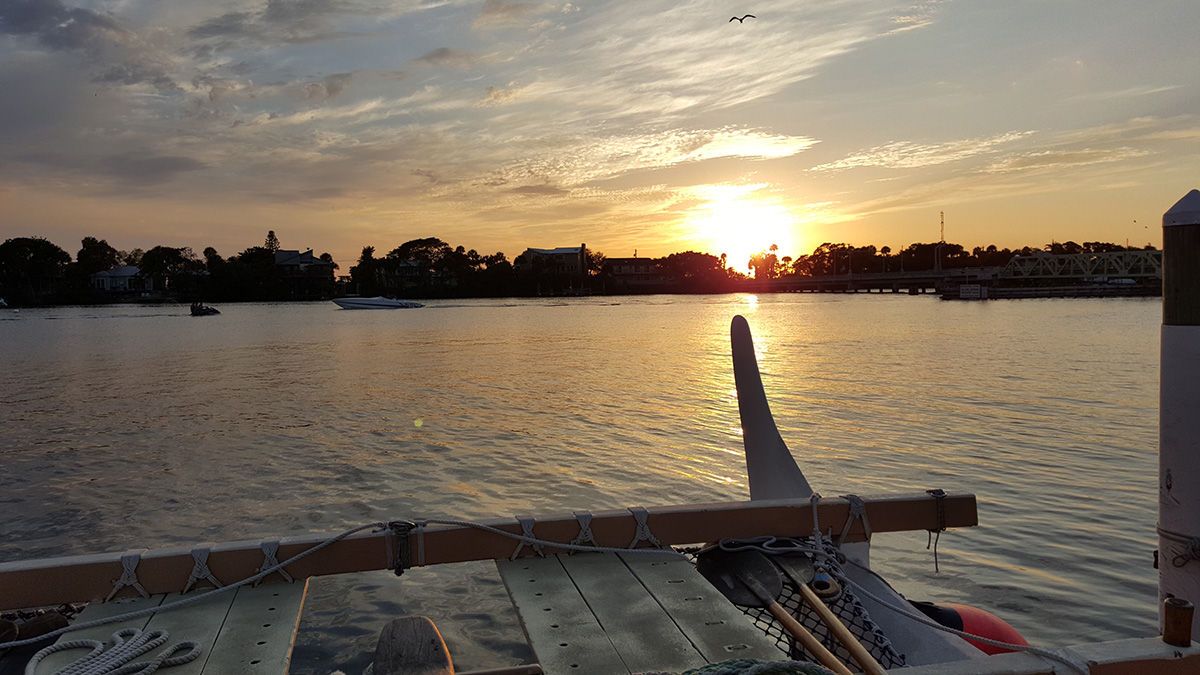
The Hokule'a was treated to many a memorable sunset, including this one captured in Indian Harbor Beach, Fla. Photo credit: Chris Blake
As this event celebrates the Polynesian tradition of outrigger canoe paddling, we hope to share how Hōkūle‘a represents the common desire shared by people of Hawai‘i and around the world to protect our most cherished values and places from disappearing.
The native Hawaiian name for this journey of epic proportions is Mālama Honua, which means “to care for our Island Earth.” The Mālama Honua Worldwide Voyage, sponsored by Hawaiian Airlines, involves Hōkūle‘a visiting more than 85 ports in 27 nations and logging more than 47,000 nautical miles over nearly four years.
“As title sponsor of the Hawaiian Airlines Liberty Challenge, we are proud of the event’s ability to combine an outrigger canoe race with free festivities for spectators, offering a taste of Hawai‘i and Pacific Island culture for everyone,” said Avi Mannis, senior vice president of marketing at Hawaiian Airlines.
Team Bradley Aims to Defend Liberty Challenge Title
After finishing second to the Waikiki Beach Boys in the 2014 edition of the 41-mile Na Wahine O Ke Kai race from Molokai to Oahu (the 2015 race was canceled due to treacherous surf), Team Bradley showed clubs from around the world last year that it is still worthy of being called one of the world’s best women’s squads.
Team Bradley, which is expected to race for its ninth Na Wahine O Ke Kai title in 11 years in the fall, claimed the women’s open division of the 19th Annual Hawaiian Airlines Liberty Challenge last year. The crew composed of six paddlers navigated the picturesque yet potentially dangerous course that took the athletes past One World Trade Center and the Freedom Tower, Brooklyn Bridge and the Statue of Liberty.
Lori Nakamura, Dane Ward, Mahealani Botelho, Alana Frazier, Nicole Pedersen and Noelani Sawyer-Auger powered Team Bradley to a winning mark of 2 hours, 11 minutes and 58 seconds and finished nearly five minutes ahead of runner-up Washington (D.C) Canoe Club.
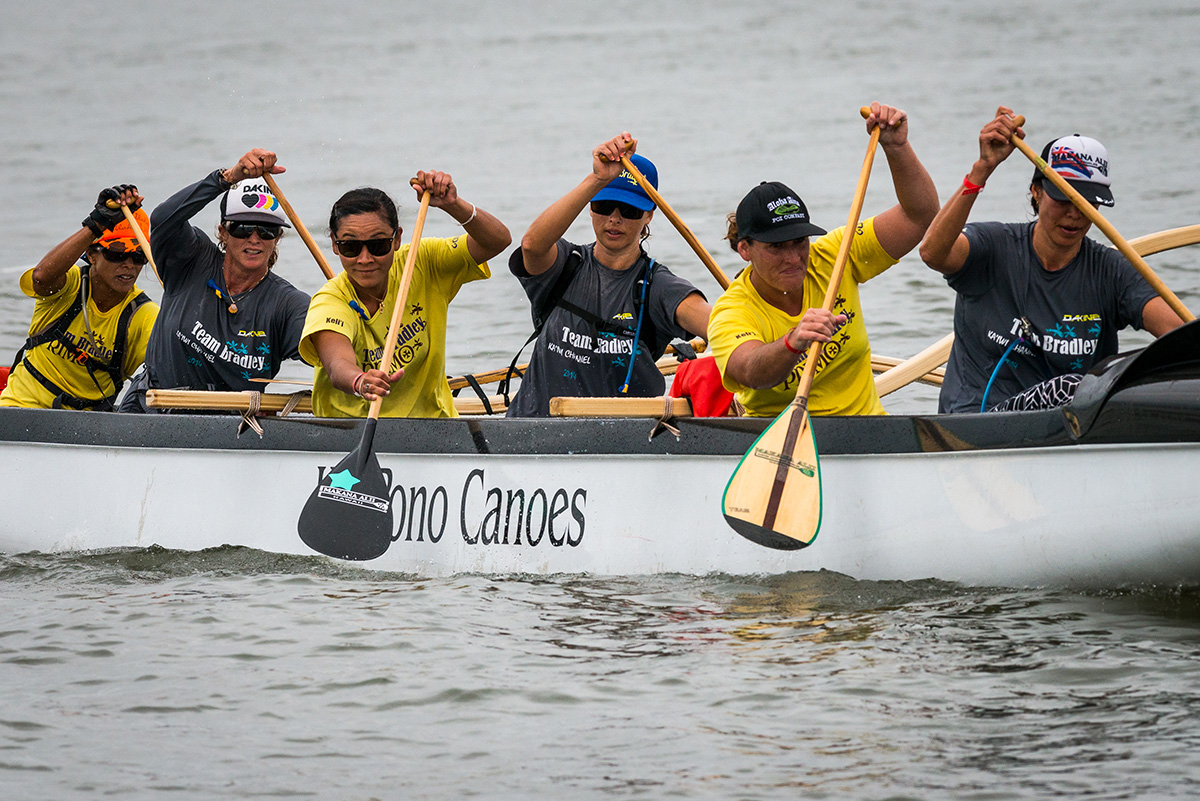
Team Bradley captured the Women’s Open Division at the 2015 Liberty Challenge. Photo credit: Kurt Nelson
The men’s unlimited division, in which racing canoes are often lighter and sleeker than traditional fiberglass or koa vessels, provided an exciting finish as Newport Aquatic Center (Calif.) completed the distance race in 1 hour, 45 minutes and 17 seconds. Kamanu, a crew from Kailua, Oahu, crossed the line 59 seconds later and fellow Hawaii crews Team Primo of Maui (1:48:14) and Team Hawaiian Airlines of Honolulu (1:51:44) rounded out the top four.
In the men’s open division, Kauai Wa‘a (1:54.57) finished nearly two minutes behind SAMU, an all-star crew from Sao Paulo, Brazil; the defending champions will be back this year to defend their crown. The unsponsored Garden Isle crew showcased the heart and determination that help make canoe paddling so special. The team was heralded by race officials and those within the paddling community for fund raising to make the trip to New York and nearly winning the field composed of primarily professional and sponsored teams.
Hōkūle‘a Inspires Educator, Future Generations of Learners
Chris Blake, a science teacher and head women’s volleyball coach at Kamehameha Schools- Kapālama, was honored with the unique opportunity to interact with multiple legs of Hōkūle‘a’s Mālama Honua voyage.
In November of 2014, the instructor was part of a Kamehameha group that represented the Maui, Hawai‘i Island and Kapālama campuses and welcomed Hōkūle‘a and her sister vessel Hikianalia upon their arrival in Waitangi, Aotearoa. Blake recalls being received by Ngātokimatawhaorua, a 36-meter-long waka and 80-plus paddlers and with the powhiri and haka by over 100 Maori warriors.
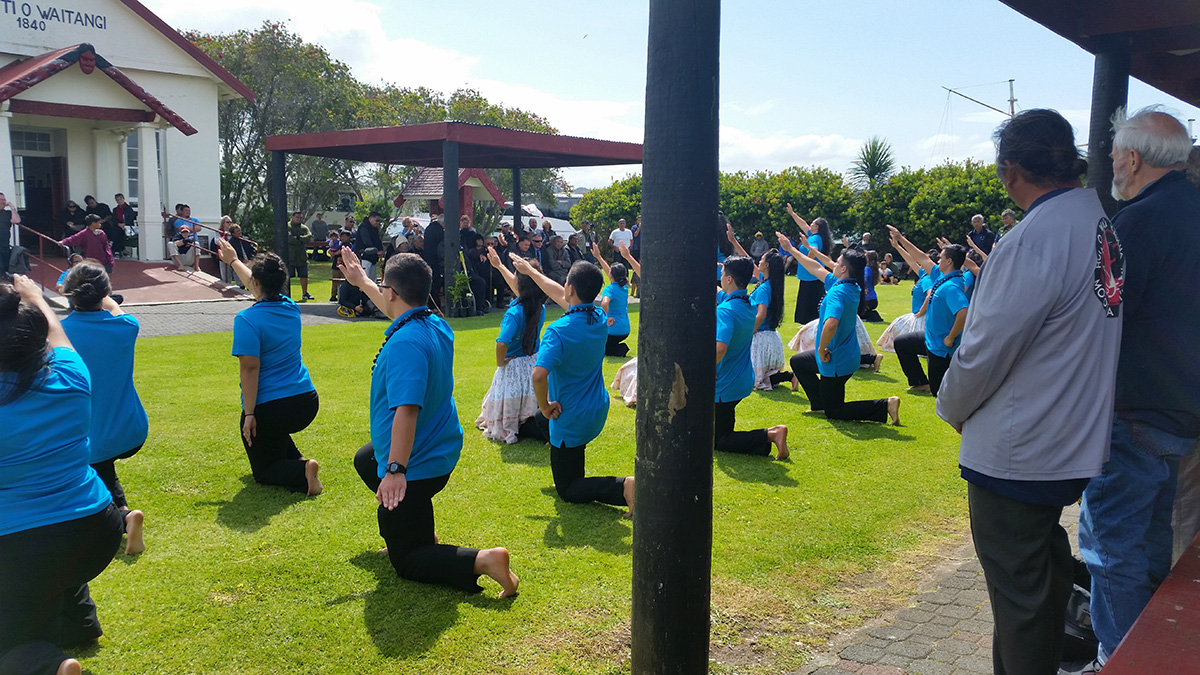
The Kamehameha haumana (students) from Hawaii Island, Maui and Kapālama perform at the welcoming ceremony at Te Tiriti of Waitangi marae in Aotearoa in Nov., 2014. Photo credit: Chris Blake
“We were also there to visit many primary schools and colleges (high schools) in Waitangi, Waikto and the University of Waikato and Te Whanaranga o Aotearoa and the Whakairo (carving school) in Te Puia,” Blake said. “It was there where James Rickard, head of the carving school, came to talk to the group and let us know that ‘Google is not your Tupuna (your ancestors). It has a great place for information, but it is not knowledge.’
“It helped to inspire me in my classroom instruction to look deeper than just the surface and the information there. As educators, we have to seek to inspire and to provide the conditions for deeper understanding of what we are doing and its relevance. It was also there that we were exposed to the Maori culture and how they have a great identity of who they are in their communities and where they need to go. Many of our haumana (students) and kumu (teachers) left with a better understanding of who they were as Hawaiians. I left with a sense of self and a mission to have our haumana in our science classes better know that their identity of self and to have being Hawaiian be a part of this and to shape their worldview.”
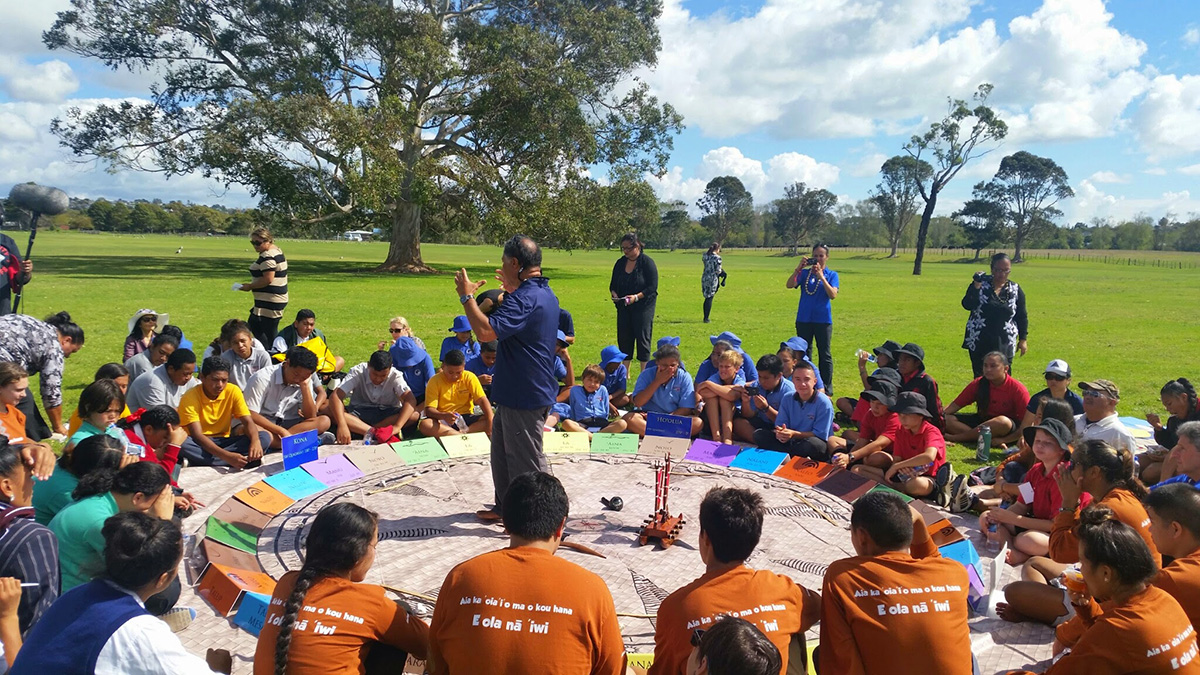
Haumana from Chris Blake's Papa Mālama Honua and AP Physics 1 classes from Kamehameha-Kapalama, and primary student leaders from Manaiakalani schools in Point England learning about the star compass from PWO navigator Kalepa Babayan in March, 2015. Photo credit: Chris Blake
In April 2016, Blake was asked to join Leg 19 of the worldwide voyage and be part of the crew as it traversed the wetlands of Florida. Blake met the crew in Moore Haven on the Western coast of Florida and made the journey across Lake Okeechobee, the second-largest inland freshwater lake in America. The group then went to Cape Kennedy and toured the NASA facilities.
“Hōkūleʻa holds so much mana (power), and so many powerful people that we have heard of and many heroes and heroines that we have not, have been a part of these voyages,” Blake said. “She is a strong gravitational force that attracts so many amazing people. Just on the trip, we were able to have total strangers come to the waʻa and be willing to give everything and anything without any thought of anything in return.
“The aloha that people have shown to all of the crew and to be able to share mana with these people has been amazing. They know of her voyages and her stories and want to be able to see her and to touch her to be a part of the voyage. Hōkūleʻa, Hikianalia and the Polynesian Voyaging Society represent innovation through taking our traditional knowledge and applying them into a contemporary context.”




